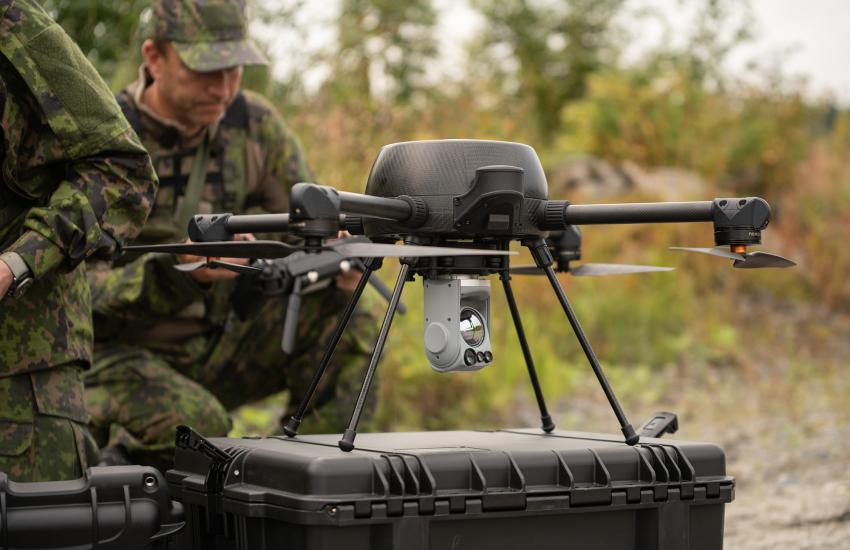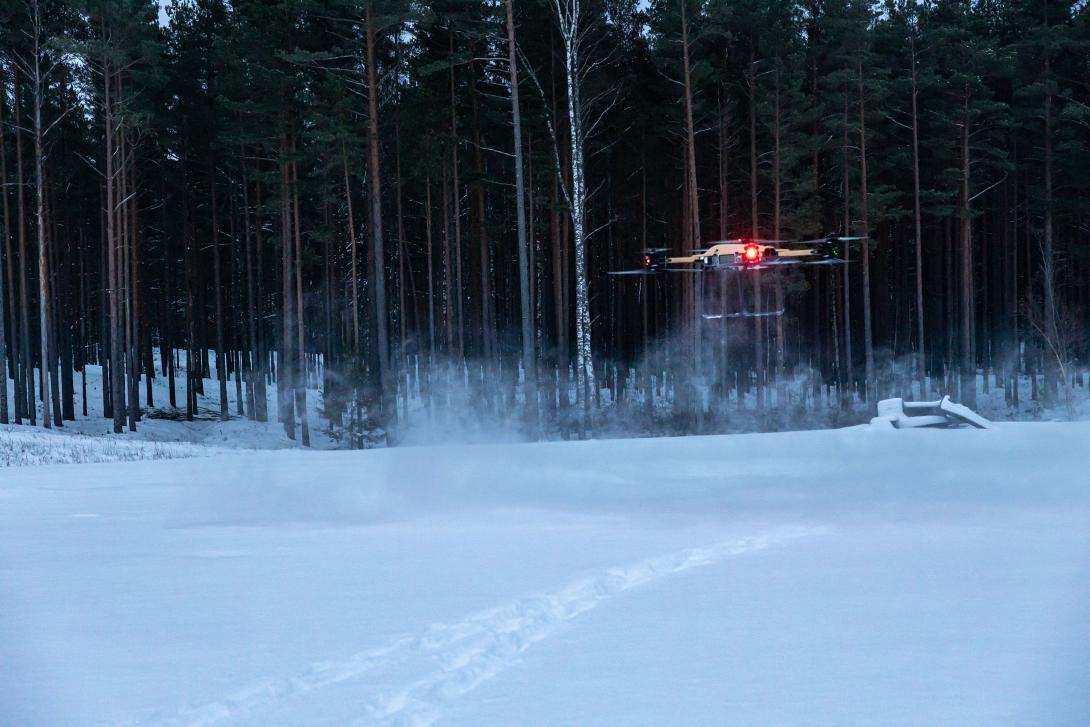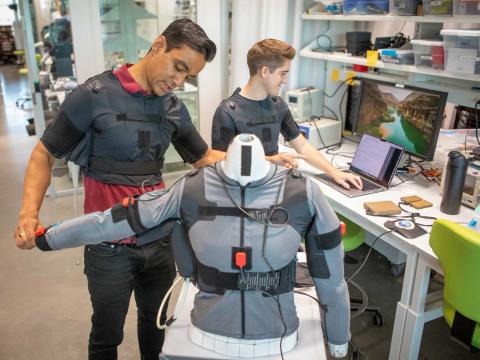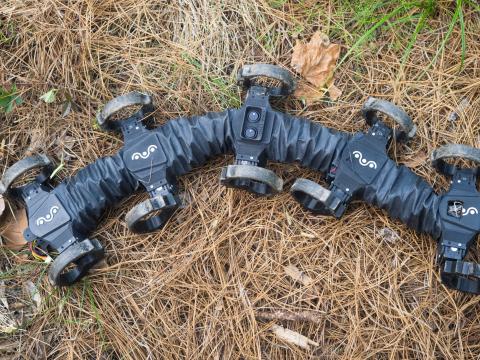Finland Aims High With Its 2030 Drone Development Goals
As modern warfare advances and risks to critical infrastructure gain global momentum, Finland looks to intensify its modern technology landscape. By 2030, Finland seeks to redefine itself as the most attractive and innovative nation for drone development.
Finland’s caution against neighboring threats has spanned over centuries. To this day, laws mandate that bomb shelters be built within most structures to protect a population of less than 6 million people. Just two years ago, Reuters reported Finland’s inventory of 50,500 bomb shelters across the nation. Today, some of the country’s leading commercial companies are partnering to instill a more innovative and modernized culture to further boost national security.

A starting point approach was to release Finland’s very own drone strategy, which, though not officially recognized by Finland’s defense forces, sets the stage for the country’s technological evolution. As the English version of the strategy has not yet been released, SIGNAL Media obtained a DeepL Pro-translated version from Jarkko Surakka, one of the thought leaders who helped shape the strategy. The Finnish version was published on January 31.
Jarno Limnéll, a Finnish member of parliament representing the National Coalition Party, brought to the table a working group of drone industry stakeholders to draft the strategy. Limnéll’s curriculum vitae lists previous roles as cybersecurity director at Stonesoft and Insta Group Oy, as well as 10 years serving as an active-duty officer for the Finnish Defence Forces.
Limnéll, in collaboration with the Finnish Defence and Aerospace Industries Association, also known as PIA, set up the working group consisting of nine individuals representing some of Finland’s most prominent commercial sector members: Lifeline Ventures, Patria, Nokia, VTT Technical Research Centre of Finland, Teli, Defence Forces Pietari and Nordic Drones.
Finnish subject matter experts outside the listed organizations also participated in discussions.
“Currently in Ukraine, drones come up with almost 75% of all the casualties of the opponent, so it’s going to completely change the dynamics of the battlefield,” said Surakka, CEO of Epinova Oy, during a discussion with SIGNAL Media.
A February report by the United Nations Human Rights Office of the High Commissioner Ukraine brought attention to short-range drones becoming the most dangerous weapons for civilians in Ukraine. The report states that “short-range drones caused more casualties than any other weapon,” and that drone attacks resulted in the death of 139 civilians, as well as 738 civilians injured for the month of January alone.
Of note, Russia’s drone usage for wartime operations has seen an ongoing progression. Reports analyzing the 2008 Georgia-Russia conflict cited a beginning to an era of unmanned aerial vehicles (UAV). However, the 2022-begun war in Ukraine has boosted the strategic development of the rapidly evolving capability.
“[The Finland drone strategy] has been discussed much earlier than the Ukraine war, but as most of these kinds of strategic approaches or ideas go, the war, whether we like it or not, is a huge catalyst for change,” Surakka stated. “We see that in every war, in aviation in the Second World War, they started with biplanes, and they ended up with the jet engines in less than three years.”
Acknowledging the 830-mile border with Russia, Finland must remain prepared, Surakka stated, further speaking on the strategy’s inception. While the Nordic nation prides itself on advanced evolution of sensors, there is room for growth when it comes to drone development and subsequent technological modernization.
“We want to be, by 2030, the best country for drone innovation and drone development,” Surakka went on. “We are very aware that, of course, we can’t compete with the manufacturing volumes ... because the sheer size of the country prevents that ... but that doesn’t prevent us from being the most innovative one.”
Surakka additionally stated that although NATO partners and allies did not participate in the drone strategy discussions, international cooperation and involvement will be necessary for operational success.
While a military perspective is offered, the strategy is more focused on five areas needed to successfully meet its 2030 goal. The areas of focus include education; agreement on common requirements and acquisitions for Finnish security authorities; drone regulation improvements; attracting foreign talent and expertise; and investing in common testing facilities.
Finland’s competitive advantage is the contested environment it offers for its innovators. So said Teemu Alakoski, senior vice president of business development at Patria. Alakoski was a member of the working group assigned to draft the strategy.
For example, Finland’s four very different seasons create communications, optics and image recognition challenges, Alakoski told SIGNAL Media in an interview. “Navigation based on image has to adapt to four different seasons, communications works differently if you have leaves in the trees and so forth,” he explained. “We have a wide range of temperatures. In the winter, it can be -40 degrees Celsius, and in the summer, it can be 35 degrees Celsius.” All solutions systems must be able to operate in these varying temperatures, Alakoski stated.
The nation’s high latitude also poses significant challenges, he shared. Navigation systems, for example, do not operate well at higher altitudes rather than lower latitudes. “Geostationary satellites are usually or mostly unreachable for communications,” therefore the nation cannot rely on them, Alakoski went on. “We have to have means to communicate with drones that are beyond line of sight by other means than geostationary satellites.”

Additionally, the country—which became the 31st member of NATO two years ago—has become accustomed to regular jamming of its global navigation satellite system, or GPS navigation systems. The contested and often denied environment has forced a return to more classically secure radio navigation systems, according to reports.
“We believe that this specific environment can actually be turned into a competitive edge, so we tend to think that whatever works here works everywhere else,” Alakoski stated.
Surakka echoed his statements. “Both maritime and aerial GPS interference is a bit of a problem,” he stated. According to Surakka, Russian interference has taken place across the entire NATO border with an aim to detect state weaknesses.
“They test our capabilities daily and they see how well or how badly our critical infrastructure is protected, and we have to be prepared for that, and drones [are] just one of those many things that we have to do well,” Surakka stated. Along those lines, he explained, a small country like Finland must maintain a constant comprehensive security mindset, whether it comes to electricity, disaster response or national security threat mitigation.
One solution to this ongoing threat, highlighted throughout the strategy, is making Finland the best place to start a drone business, Surakka said. Without a strong business base, the innovation cycle will not be fast enough to meet current demands, he explained.
“I believe that the best innovation cycle for any capability comes from small- to medium-sized companies and their innovative entrepreneurial people,” Surakka stated. Still, while echoing Surakka’s statements on small business challenges, Alakoski pointed out Finland’s strength and resilience.
Finland’s might is in its high education level and world-class innovation, including mission planning, mission control, electronic warfare communications and communications with a low probability of detection or interception, Alakoski mentioned.
“As a very small nation, we are pretty agile, so usually if we come up with a strategy such as this, it’s relatively easy to implement those actions, those recommendations,” as long as all parties are in agreement, he said.





Comments